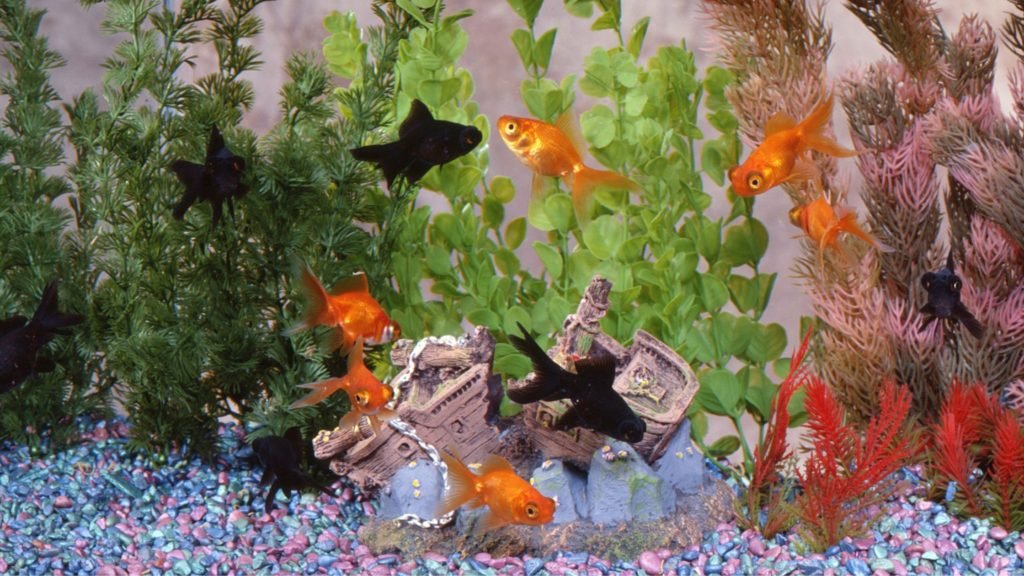Welcome to exploring a fascinating fish-keeping aspect: fish reproduction in aquariums. From enthusiasts to seasoned aquarists, laying eggs in fish tanks holds intrigue and charm. But precisely how do fish lay eggs in a fish tank? Let’s journey into this exciting underwater world.
The Fish Egg-Laying Process in Tanks: An Overview
In the wild, fish choose their breeding ground carefully, often seeking quiet, safe spots where their eggs can develop undisturbed. Recreating these conditions in your home aquarium is crucial for promoting successful breeding. But before we explore the specifics, let’s address the central question: how do fish lay eggs in a fish tank?
Most egg-laying fish release eggs into the water. Some do so randomly, while others opt for more strategic placements, such as the underside of leaves or dedicated spawning sites. Male fish then fertilize these eggs by releasing milt into the water.
Understanding Different Fish Breeding Types
Fish can broadly be categorized into three types based on their breeding habits: livebearers, egg layers, and mouthbrooders. Like guppies and mollies, livebearers give birth to free-swimming fry instead of laying eggs. Mouthbrooders, such as certain cichlid species, carry fertilized eggs in their mouths for protection.
Our primary focus here is on egg layers, which leads us to the question, “How do fish lay eggs in a fish tank?” Egg-layers are further split into several categories, including egg scatterers, egg depositors, and nest builders, each with unique egg-laying behaviors.
Understanding the specific breeding habits of your fish species is vital to answering the question, “How do fish lay eggs in a fish tank?” It guides you in creating the right conditions to encourage breeding and ensure the next generation’s survival.
Creating Suitable Conditions for Fish to Lay Eggs
Creating an environment conducive to breeding is essential for successful fish breeding in tanks. So, what conditions might encourage your fish to lay eggs?
Adequate Space
Fish need enough room to carry out their breeding behaviors. Ensure your aquarium is spacious enough for the fish species you have. Overcrowding can induce stress and hinder breeding.
Breeding Grounds
Some fish lay eggs on flat surfaces, others on plants, and some build nests. Providing these elements in your tank can help stimulate breeding.
Balanced Diet
A diet rich in nutrients can prepare your fish for breeding. High-quality flakes or pellets, live foods, and frozen treats can ensure they are in prime condition.
Optimal Water Conditions
They maintain the correct water parameters, such as temperature, pH, and hardness. In order to replicate the natural breeding environment of fish, these conditions need to be frequently adjusted.
Appropriate Light Cycles
Simulating natural light patterns can trigger breeding behaviors. Fish are sensitive to light and darkness and breed following seasonal light changes.
Signs Your Fish Is Ready to Lay Eggs in a Tank
Now that we’ve established a conducive environment, how do you know when your fish are ready to lay eggs? That depends on the species, but there are general signs you can look out for:
- Color changes: During breeding periods, many fish exhibit more vibrant colors.
- Behavior changes: Some fish display unique courtship behaviors, like dancing or particular swimming patterns.
- Increased aggression: Many fish become more territorial when ready to lay eggs to protect their future offspring.
Recognizing these signs can help you prepare and ensure you’re ready to take the following steps in the fish breeding process, answering that initial query of “How do fish lay eggs in a fish tank?”
The Process of Laying Eggs in Fish Tanks
Once you’ve determined your fish are ready to breed, what’s next? Let’s break down the process of laying eggs in fish tanks.
- Courtship: This can range from elaborate dances to aggressive behaviors to show dominance and attract a mate.
- Spawning: Depending on the species, the female fish may scatter eggs randomly, deposit them on a particular surface, or place them in a carefully constructed nest.
- Fertilization: In most cases, the male fish fertilizes these eggs externally by releasing milt.
- Protection: Some species, like cichlids, guard their eggs fiercely. Others may show little interest once the eggs are laid and fertilized.
That is a general overview of how fish lay eggs in a fish tank, but remember, the process can differ significantly between species.
How to Take Care of Fish Eggs in a Tank
Once the eggs are laid and fertilized, it is crucial to create an environment that promotes healthy egg-laying in your aquarium fish and protects the eggs until they hatch.
Depending on your fish species, you might need to separate the eggs (and, later, the fry) from adult fish to prevent them from being eaten. Some aquarists use breeding boxes or separate tanks for this purpose.
Keeping the water clean is also crucial, as poor water quality can harm the eggs and reduce their chances of survival. Gentle aeration can help keep oxygen levels high and prevent fungus, but avoid strong currents that can dislodge the eggs.
It’s also essential to monitor temperature and humidity levels closely. Many fish eggs require specific conditions to hatch successfully.
The Intricacies of Fish Egg Incubation in Aquariums
Fish egg incubation in aquariums is a delicate process. After understanding “how do fish lay eggs in a fish tank?”, the next question is how do these eggs become fish?
In general, the time it takes for fish eggs to hatch depends on the species and the conditions in the tank. It can range from a few days to a few weeks. Some aquarists opt to use a separate incubation tank to ensure optimal conditions are maintained.
Watching the eggs will signal when the hatching is about to occur. You might spot tiny eyes inside the eggs or notice them start to twitch or wiggle. Soon after, you’ll witness the magical moment of the fry breaking free from its eggs.
From Eggs to Fry: The Next Stage of the Journey
Once hatched, the tiny fish, known as fry, need specialized care to grow and thrive. They typically require high-quality fry food, perfect water conditions, and a safe space free from threats.
Remember, caring for fry is as essential as understanding “how do fish lay eggs in a fish tank?” After all, these little ones represent the next generation of aquatic pets.
FAQ
How do you know if your fish has laid eggs in the tank?
Observing your fish is the key. Female fish often exhibit a swollen belly full of eggs. Also, look for tiny, round objects attached to surfaces, floating around, or nestled in substrate or plants in the tank.
How long does it take for fish eggs to hatch in a tank?
The time it takes for fish eggs to hatch varies widely by species, ranging from a few days to several weeks. Environmental conditions, including temperature and water quality, also affect this.
How do you care for fish eggs in a tank?
Proper care for fish eggs involves maintaining optimal water conditions, potentially separating eggs from adult fish, and regular monitoring. The specific needs will depend on the species of fish you have.
Can fish eggs survive out of water?
Fish eggs need to remain submerged in water to survive and develop correctly. Exposure to air could dry them out and prevent them from hatching.
How can I increase the chances of my fish laying eggs?
Create a conducive environment by providing enough space, maintaining optimal water conditions, offering a balanced diet, and simulating natural light cycles. The specific needs can vary depending on the species.
Conclusion
We hope you’ve enjoyed and learned from this exploration into the world of fish breeding, answering the complex question, “How do fish lay eggs in a fish tank?” Remember, each fish species is unique, so conduct research and observations specific to your aquatic pets. Here’s to your fish breeding success!
That marks the end of our journey through the fascinating world of fish reproduction. We hope this guide has clarified your original question, “How do fish lay eggs in a fish tank?” With this newfound knowledge, you can facilitate and nurture this intricate process in your home aquarium. Happy fish keeping!
And remember, observing, learning, and growing with your aquatic pets is what makes fish keeping such a rewarding hobby. Enjoy the process!
Related Articles

Mastering the Art of Dog Training: How to Train Your Dog to Stop Barking
Introduction to Dog Barking Barking is an inherent

How to Clean Goldendoodle Ears: Preventing Infections
Welcome to our essential guide on how to

Top Picks: Best Harness for Goldendoodle Revealed!
Welcome to our comprehensive guide on finding the

Insider Tips for the Perfect Goldendoodle Diet
Struggling with your Goldendoodle’s diet can be a

Goldendoodles Grooming: The Ultimate Toolkit for Perfect Care
Table of Contents Welcome to the world of

Discover the Perfect Dog Nail Grinder for Your Furry Friend
Finding the ideal dog nail grinder can be daunting in

